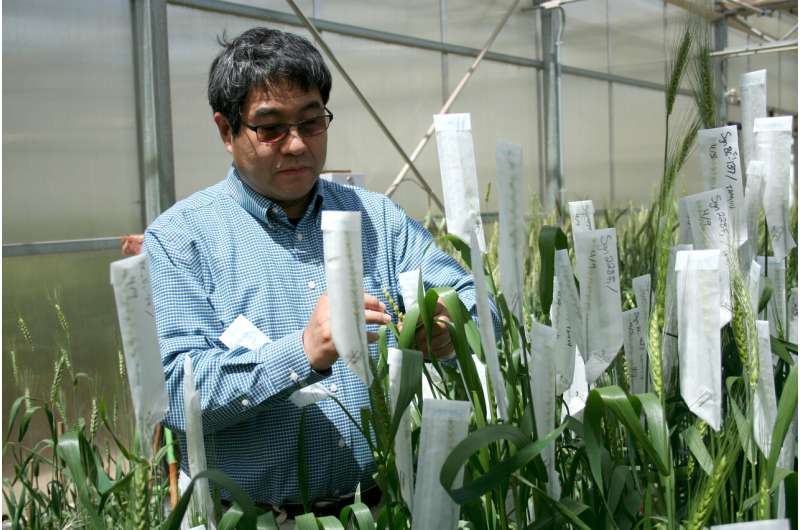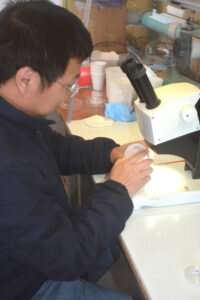Wild wheat relative genes to aid in battle against trio of pests

Wheat curl mite, greenbug and Hessian fly have long been troublemaker pests for Texas wheat, but a team of Texas A&M AgriLife Research scientists is ready to go high tech to help control them.
Dr. Shuyu Liu, AgriLife Research wheat geneticist in Amarillo, will lead a team to develop hard winter wheat germplasm with resistance to these pests using genes from a wild wheat relative. The research is funded by a U.S. Department of Agriculture National Institute of Food and Agriculture grant.
Joining Liu on the study are AgriLife Research scientists from Amarillo: Dr. Jackie Rudd, wheat breeder; Dr. Chenggen Chu, wheat genetics scientist; Dr. Ada Szczepaniec, entomologist; and Dr. Qingwu Xue, crop stress physiologist. Joining from College Station are Dr. Amir Ibrahim, wheat breeder, and Dr. Shichen Wang, bioinformatics scientist.
Wheat production in Texas is limited by the harsh and variable environment and a multitude of diseases, insects and other pests, Rudd said.
"We are now looking to the past, to wheat's wild relatives, to find solutions to these stresses, which can reduce yield and end-use quality," he said.
The specific goal of this project is to explore synthetic hexaploid wheat to find new resistance genes to defend against these three pests, Liu said.
"Currently, TAM 204 is the only commercial cultivar with this level of resistance," he said. "It is critical we continue to diversify and find different sources of resistance to these pests."
The synthetic wheat lines were developed by the International Maize and Wheat Improvement Center, known as CIMMYT, from artificial interspecific crosses between durum wheat and Aegilops tauschii, a progenitor species of wheat, Rudd said.

The synthetic lines are reservoirs of resistance genes not found in modern wheat varieties, he said.
"A lot of work has been done worldwide to bring genes from synthetics into spring wheat," Rudd said. "But so far, little has been done to incorporate these into winter wheat, like we grow in the Great Plains of the U.S."
Liu said by combining the resistance found in the synthetics with existing bread wheat germplasm, "we can broaden the genetic base for more durable resistance."
Processes such as exome capture will help geneticists find markers that are tightly linked or even part of the gene, Chu said. The markers can then be used in an accelerated breeding process facilitated by doubled haploids to merge these genes into existing TAM varieties.
Liu said because pests evolve with host-resistance genes and biotypes of insects continually change, single major resistance genes may only be effective for a few years.
"This situation pushes researchers to keep searching for new sources of resistance and new genes in currently available sources of wheat or its relatives," he said.
In recent years, progress in wheat genetic and genomic research has accelerated due to improved techniques and knowledge, Liu said. With improved understanding of the wheat genome and new molecular techniques, the whole process of developing superior germplasm lines and adapted cultivars can be sped up.
"Research in the molecular lab, growth chamber and greenhouse, along with field experiments, will be conducted to identify and validate diagnostic genic markers linked to target genes controlling important traits," he said.
"This project will provide a greater understanding of the pest-resistance mechanisms," Liu said. "The genetic markers linked to them can aid in selection efficiency by breeders, who will use the superior germplasm to develop future cultivars with these resistances for farmers."
Provided by Texas A&M University




















